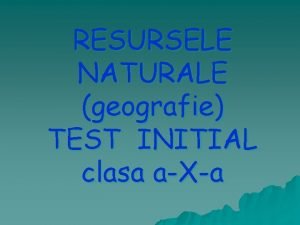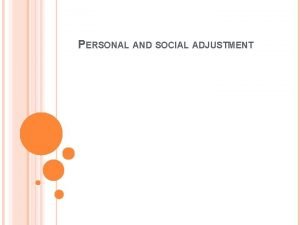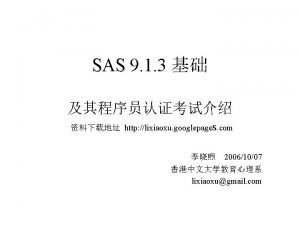SAS Adjustment Platform Initial Test Results Matt Capstick








- Slides: 8

SAS Adjustment Platform Initial Test Results Matt Capstick 16 -09 -2020

Vertical Axis Performance V 1 Axis Performance at Middle of Travel V 2 Axis Performance at Middle of Travel 0, 600 V 3 Axis Performance at Middle of Travel 0, 700 0, 600 0, 500 0, 300 0, 200 Displaceement [mm] 0, 500 0, 400 0, 300 0, 200 0, 100 0, 000 0 5 10 15 Revolutions (CW) 20 Numbered left to right, from the adjustment side

Lateral Axis Performance L 1 Axis Performance at Middle of Travel L 2 Axis Performance at Middle of Travel 0, 000 0 5 10 15 20 0 -0, 100 -0, 200 -0, 150 -0, 300 Displaceement [mm] 10 -0, 050 -0, 100 -0, 400 -0, 500 -0, 600 -0, 250 -0, 300 -0, 350 -0, 700 -0, 400 -0, 800 -0, 900 5 -0, 450 Revolutions (CW) -0, 500 Revolutions (CW) 15 20

Summary Tables Start 0. 00 1. 35 2. 70 Direction CW CW ACW Axis V 1 V 2 V 3 L 1 L 2 Lng V 1 25. 1 28. 6 -31. 3 V 2 32. 1 33. 0 -32. 9 -31. 7 Resolution µm/rev V 3 L 1 25. 0 -37. 3 27. 6 -39. 8 -31. 4 -29. 9 Design Resolution Measured Resolution µm µm 30 28. 4 30 32. 4 30 28. 5 40 38. 5 40 25. 5 30 13. 2 L 2 -28. 0 -23. 1 Backlash Rev 0. 49 0. 37 0. 14 0. 32 0. 19 1. 10 Lng -7. 3 -19. 0

Summary Tables Start 0. 00 1. 35 2. 70 Direction CW CW ACW Axis V 1 V 2 V 3 L 1 L 2 Lng V 1 25. 1 28. 6 -31. 3 V 2 32. 1 33. 0 -32. 9 -31. 7 Resolution µm/rev V 3 L 1 25. 0 -37. 3 27. 6 -39. 8 -31. 4 -29. 9 Design Resolution Measured Resolution µm µm 30 28. 4 30 32. 4 30 28. 5 40 38. 5 40 25. 5 30 13. 2 L 2 -28. 0 -23. 1 Lng -7. 3 -19. 0 Incomplete Backlash Rev 0. 49 0. 37 0. 14 0. 32 0. 19 1. 10 Performing as designed Resolution less than expected, large backlash

Differential Thread Issues • We have had some issues with the differential thread mechanism used for the lateral adjustment • Designed to have a M 10 x 0. 5 thread internally and a M 16 x 0. 54 external thread • There appears to have been no issues with the standard M 10 x 0. 5 thread • The quality of the custom thread appears to degrade along the length of the differential thread • Increases wear, noise, and friction as we move the differential nut inwards • Occurred with both, one is currently stuck together, the other has striped threads (right)

Possible Causes • Seems to be an issue with the internal thread on the stainless steel component • Quality of the thread decreases, likely due to vibrations and the length of the tool required creating a slight sawtooth pattern • This seems to have cut into the relatively soft brass differential nut

Possible Solutions • Reduce the resolution, increase the pitch of the thread, making it easier to machine • Reduce the range of adjustment, making the thread length shorter and easier to machine • Explore other materials e. g. bronze instead of brass















